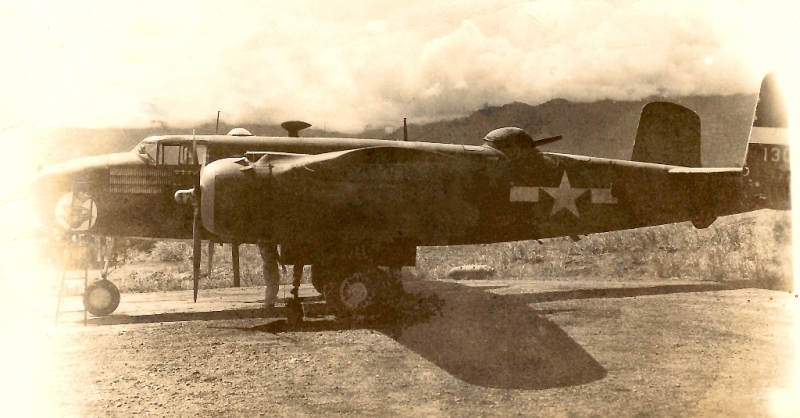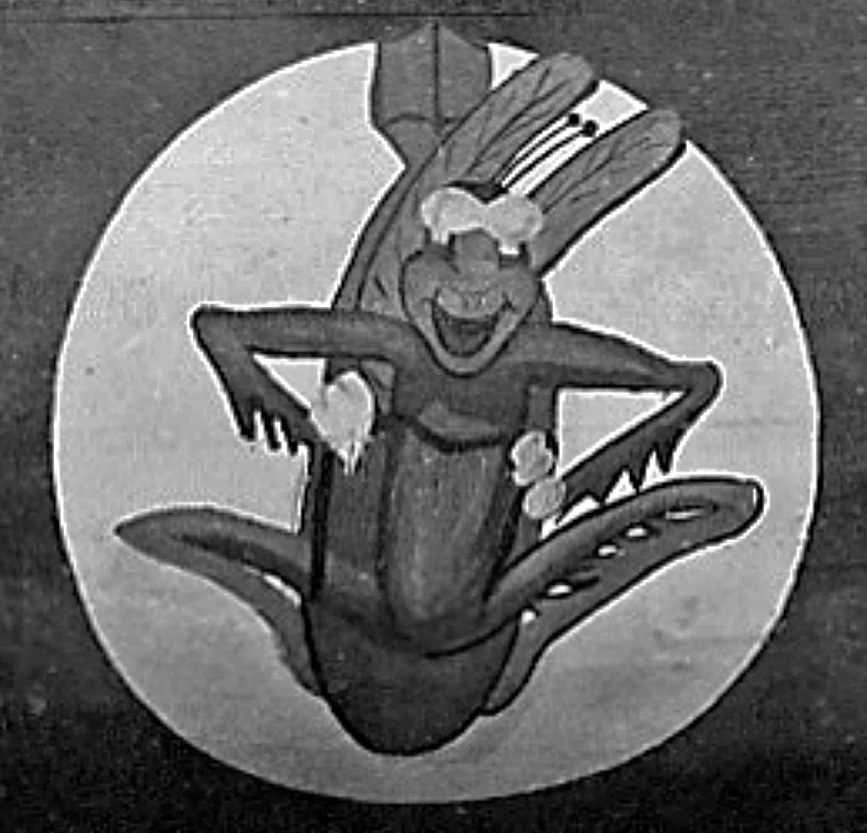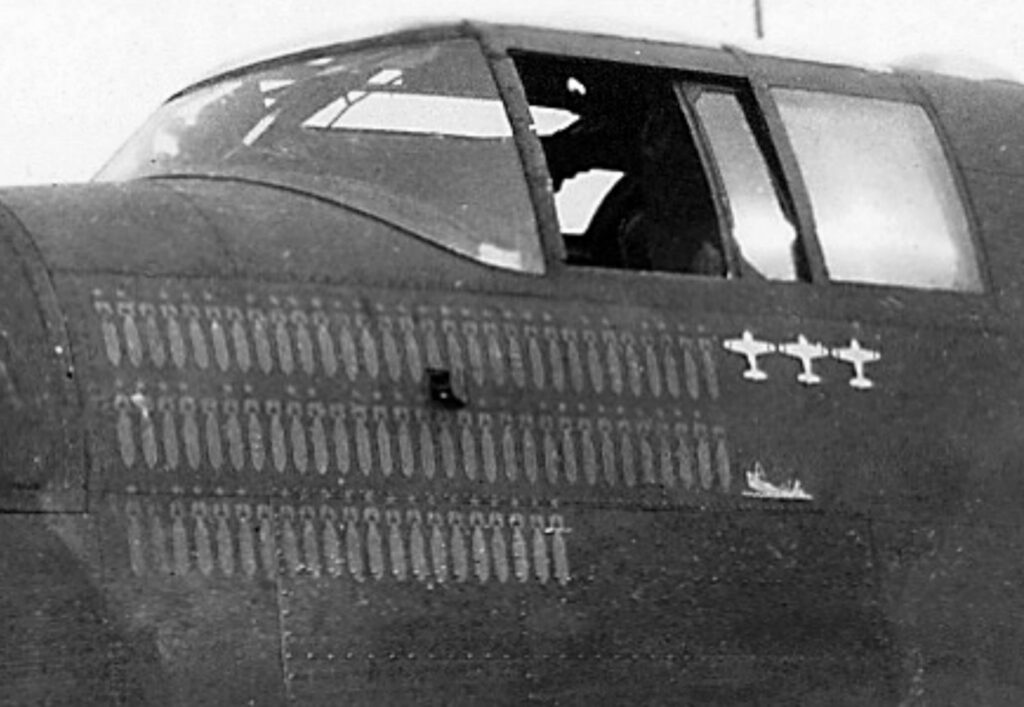
The Tin Liz flew across the Pacific with the rest of the original 345th Bomb Group airplanes in the spring of 1943. The first record I have for the Tin Liz in the mission reports is on August 29, 1943 when it was flown on a mission to Alexishafen, New Guinea. The 345th had been active in New Guinea since late June 1943 and had performed quite a few missions in support of the Salamaua campaign, but the early 501st Squadron mission reports did not record any airplane tail numbers so it is possible that the Tin Liz participated in some of those eleven early missions. The last mission was flown on May 21, 1944.
Lt. Sylvester Vogt was the usual pilot of the Tin Liz during his time in New Guinea. Once he was rotated out, “ownership” of individual airplanes seems to have become less common and they were assigned more randomly to pilots. The noseart of the Tin Liz featured a grasshopper riding a bomb and was referred to as “Deadeye Sy”, presumably a reference to Lt. Vogt. After his departure, the noseart was refreshed.

From the same set of photos taken in May 1944, it can be seen that there are 81 mission markers below the pilot’s window. My data can only account for 70 of those missions, but that might change as new documents are discovered in the National Archives or online sources.

The available mission data is displayed on the interactive map below. Clicking on an orange dot will bring up a popup with target, date, and crew information. Clicking on any of the three green triangles will display information regarding the airfield located there.
There appear to be several clusters of missions. The western end of New Britain was visited often during the Allied invasions at Arawe and Borgen Bay. Manus and Los Negros Islands in the Admiralties were targets during that invasion when the 345th was tasked with providing close air support to the ground troops. There is also a long cluster covering the Boram, Wewak, Dagua and But airdromes on the north coast of New Guinea. Those four airdromes received frequent attention from the entire 5th Air Force since they formed the largest concentration of enemy forces on the island and the airplanes stationed there could disrupt any Allied operations within a wide area.
